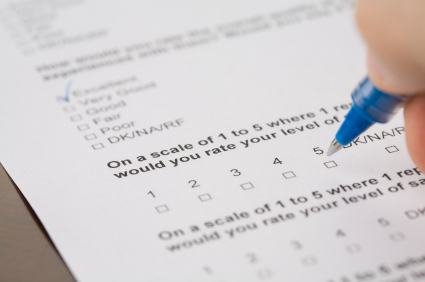
In our work with corporate wellness programs over the years, I’ve seen a lot of different perspectives on the use of Health Risk Assessments – opinions that range from considering these personal health surveys to be a kind of “gold standard”, to those that believe they are overused & even dangerous to program efficacy. Certainly the vast majority of wellness & health management professionals consider Health Risk Assessments (“HRAs”) to be a best practice, and the foundation of a properly designed program. Generally speaking, I agree… but with a few caveats.
Truth #1: HRAs are NOT necessarily good for awareness.
First, we need to have a better understanding of what makes HRAs valuable. For years, the wellness industry has done a disservice to employers and physicians by treating HRAs as some sort of critical awareness tool that will inspire people to change their habits. This rarely happens. Most people only complete the survey in order to obtain an incentive, and if you’re lucky: the person will at least glance at the post-assessment report before tossing it in the trash. Very few of these reports that we’ve seen contain information that is actionable & easy to understand; many give nebulous scores that are meaningless even when context is provided. In addition, little is understood about how the individual results were arrived at that (i.e. which responses resulted in which risks), and the result is that many people either discount the results they don’t find favorable, or simply dismiss the entire assessment as faulty.
The truth is, health risk assessments alone are NOT a great awareness tool. In order to truly function in this way, more personal guidance needs to be offered to the individual as a follow-up, including time to reflect on the results & plan specific next steps … and of course: a clear understanding about how the results were arrived at, and an opportunity to change responses to questions they may have misunderstood & answered incorrectly the first time. This is why we nearly always combine our HRA with a 15-20 minute goal-setting meeting with a Health Coach to review the results in detail. It is one thing to get a lengthy report about your habits and have your eyes glaze over; it’s a whole different ballgame to sit down with a professional and gave a conversation about it.
But what if it’s not feasible to have a goal-setting meeting following an HRA? Is it still worth doing? Yes! But probably not as an awareness-building tool. Hands down, some of the best value that comes from completion of an HRA is the data with which to measure progress, on both an individual & organization/aggregate basis. Measuring the impact and ROI of a wellness initiative comes not only from measuring changes in today’s claims, but also measuring changes in risks, which are the drivers of tomorrow’s claims. HRAs remain the best way to measure these types of risks (i.e. attitudes & behaviors) in a consistent way.
Truth #2: HRAs can be misleading
Speaking of measuring attitudes and behaviors in a consistent way, a few years ago, I learned some surprising things about how certain HRA questions were asked and answered from a concerned colleague who warns that improperly designed HRAs can actually be dangerous. For example, asking people about alcohol servings in a multi-choice format most often resulted in people choosing a selection “somewhere in the middle” rather than answering more honestly. Worse: when presented with the results of their survey with alcohol consumption listed as moderate, these individuals tended to believe their consumption was appropriate, even if on some level they knew that they had not answered the question completely truthfully.
From this example, we should all be a bit more wary about how we present information in our well-intentioned HRAs… because of course the worst possible outcome of an HRA is not just being ignored, but actually reinforcing the wrong behaviors!
Truth #3: HRAs need to be handled with care.
Last but not least, I strongly urge anyone who is considering or currently using an HRA in their wellness program to be careful not only about the question structure, but also about the mode of delivery, and the vendor who is administering the HRA.
As convenient as it is to administer these things online – where people are prevented from skipping questions, and data entry is done by the user – many people are put off by the prospect of their information being housed electronically on the web. Furthermore, we don’t want to ignore or disenfranchise those whose access to technology or literacy is limited. Online assessments are the most common and the most convenient, but they are not always the right answer. At Attentive Health, we have seen participation rates upwards of 95% when paper assessments are used… even WITHOUT the use of an incentive.
Finally, use a vendor that you believe your employees will trust and can build a relationship with. It is usually easier to use the HRA offered by your health insurance carrier, and some benefits can be had from integrating HRA data with claims data, but again: this may not always be the right answer. If you suspect that you may ever need to change health insurance carriers, or if you think your employees may not altogether trust what they (incorrectly) perceive as being “big brother”, or simply the people who denied their claims last month, it might be worth looking into other options.
Bottom line: use HRAs! But be a smart consumer about their true purpose, and how to use them wisely! It may actually be better to skip them until you’ve fully vetted the right solution for your organization…